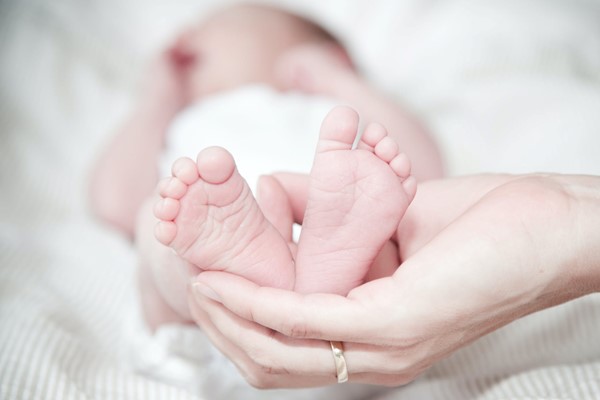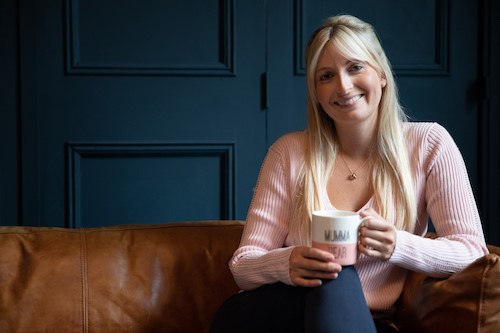How to Create Your Ideal Birth Environment
Creating your ideal birth environment is not only an important part of promoting a positive and empowering birth experience, but can also affect your hormones during labour, promoting oxytocin release and increasing your chance of a spontaneous vaginal birth. Here I have discussed some of the key points to consider when preparing for and planning your birth to create your ideal labour environment.

Choosing your birth partner(s)
Firstly, who do you want with you at your birth? Choosing someone you trust is crucial and has been shown to help your labour progress. Continuous support in labour has also been shown to reduce the need for pain relief, reduces operative delivery rates and shows increased wellbeing of your baby at birth. It can shorten your labour and has an overall positive effect on your birth experience. They are also able to provide you with the necessary physical support during your birth, such as keeping you hydrated, offering you snacks and helping you to stay mobile. This does not necessarily have to be your partner; it could be a close friend, relative or even a paid birth supporter, such as a doula. Some birth settings may limit the number of birth partners to one or two people, so it is important to check the rules in your local area.
Choosing where to give birth
In the UK, as part of the NHS, there are 4 different birthplace options:
- At home
- A freestanding midwifery-led unit
- An alongside midwifery-led unit
- Labour ward, also known as a Consultant -Led unit
There should be access to all four of these birthplace settings in your local or neighbouring area, so talk to your midwife to discuss how each of these options would be provided where you are. There are some medical problems that may increase the risk of complications to mother or baby during or shortly after labour, such as diabetes or high blood pressure so your midwife or obstetrician may recommend that you labour at a Consultant-led Unit. There are pros and cons to each location and there are some important differences between them such as, access to water for a waterbirth or access to certain types of pain relief such as an epidural, so take time to understand the differences between each and decide what is important to you.
Stimulate your five senses
It is important for you to take time to consider how to stimulate each of your five senses; sight, smell, sound, taste and touch during your labour to help you personalise your environment and increase your feeling of safety and security.
Sight
Think about how to create a dark or dimly lit space. Think about how to use lighting such as fairy lights or battery-operated tea lights to create soft ambient lighting to encourage the release of oxytocin. Most birth centres, and even some labour wards, will have dimmer switches but do bring your own options for low level lighting, just in case. If you are at home you could also think about candles, or even a fire if you have one.
Smell
This is particularly important if you are in a clinical setting, such as a hospital, as cleaning products can have a certain smell that you may not find soothing. This can be achieved with anything from using essential and massage oils to room sprays and diffusers that you associate with calm, peace and relaxation. This may even include comforting smells from home such as your pillow, your own clean laundry, or even your partner’s clothing may work for you. You should try and develop familiarity with a particular smell during your pregnancy when at home and relaxed to encourage similar feelings whilst in labour.
Sound
This is really important to think about if you are in a setting outside of your own home environment as it may be one of the more difficult senses to control. Unfortunately, if in a healthcare setting there may be healthcare professionals or other women audible, which may affect your ability to concentrate. It is worthwhile thinking about bringing some music or a playlist with you that can help block out external noise either via a portable speaker or headphones. If you have undertaken a hypnobirthing course, playing positive affirmations may also be helpful for you. Discuss with your birth partner if you would like to talk during labour for distraction or if you would prefer to keep conversation to a minimum allowing you to focus on your labour. This also applies for communication with healthcare professionals as some women prefer to focus on their breathing and movement.
Touch
Some women may find touch, massage and stroking relaxing. Light touch is a good way of stimulating oxytocin and encouraging relaxation. Others find labouring in the water beneficial and being in the water has been shown to reduce pain. You can wear whatever you like during labour, including nothing, and many women find this preferable. If you wish to bring clothes, try to wear something that feels nice against your skin and helps you to feel comfortable and relaxed.
Taste
It is really important to keep your energy levels up with snacks and nibbles throughout labour. When you are packing your birth bag, make sure you bring things you really enjoy. Your favourite sweets, biscuits or snacks will not only supply you with energy but may provide you with some comfort and familiarity.
Plan and prepare for your birth
Everyone’s ideal birth environment will look different, and it is important to take the time during your pregnancy to consider ways you can enhance your surroundings to help you feel relaxed, safe and secure. Lots of these options are easily transferable to any birth setting whether you are planning a homebirth or hospital birth and it is important to discuss with your midwife what options are available where you are. Practice setting up your space throughout your pregnancy, so you become increasingly familiar with the environment and so your birth partner knows how to create that magical space, ready for your ideal birth experience and meeting your baby.
About the Author
 Dr Ellie Rayner, Obstetrician and Gynaecologist, Antenatal and Hypnobirthing Teacher and founder of The Maternity Collective.
Dr Ellie Rayner, Obstetrician and Gynaecologist, Antenatal and Hypnobirthing Teacher and founder of The Maternity Collective.
Dr Ellie Rayner is a practicing Obstetrician and Gynaecologist and founder of The Maternity Collective. She is the only Obstetrician to offer private and group, expert-led Antenatal and Hypnobirthing Classes both Online and face-to-face. She is passionate about providing parent-centred, evidence-based care for all pregnancies and supports all methods of birth. Follow Dr Ellie Rayner @maternitymedic for the latest evidence-based information on pregnancy, birth and women’s health issues.
The Maternity Collective provide comprehensive online antenatal and birth preparation courses led by a team of NHS expert healthcare professionals, including a Community Midwife, Obstetrician, Internationally Board-Certified Lactation Consultant (IBCLC) and Newborn Sleep and Behaviour Expert. They offer a complete 7 hour online antenatal and birth preparation course that can undertaken from the safety of your own home, at your own pace with videos to re-watch as many times as needed. More information is available at https://www.thematernitycollective.co.uk/